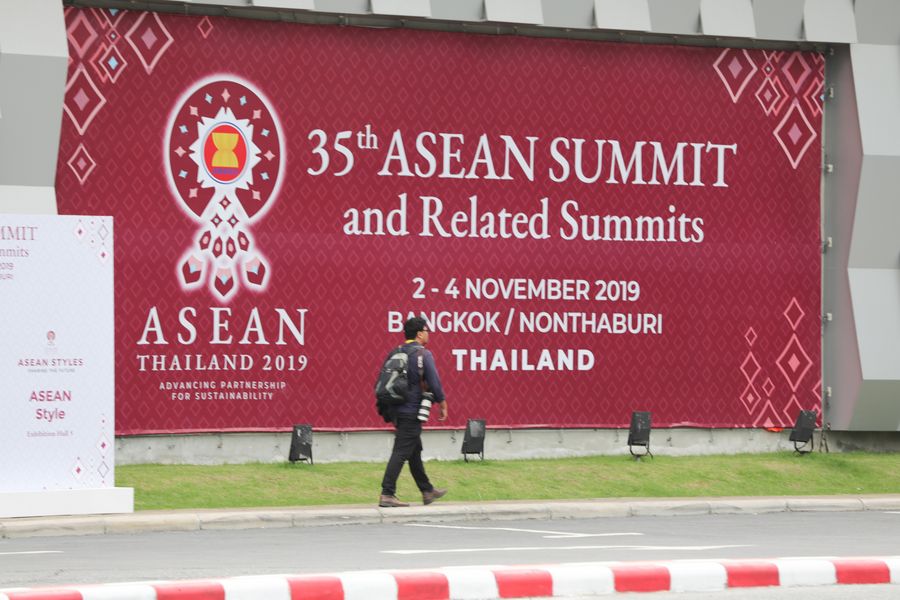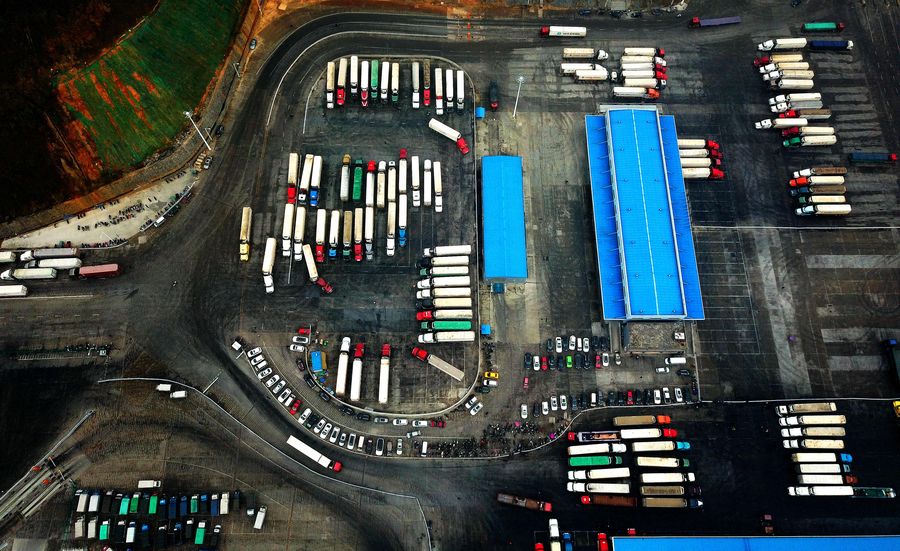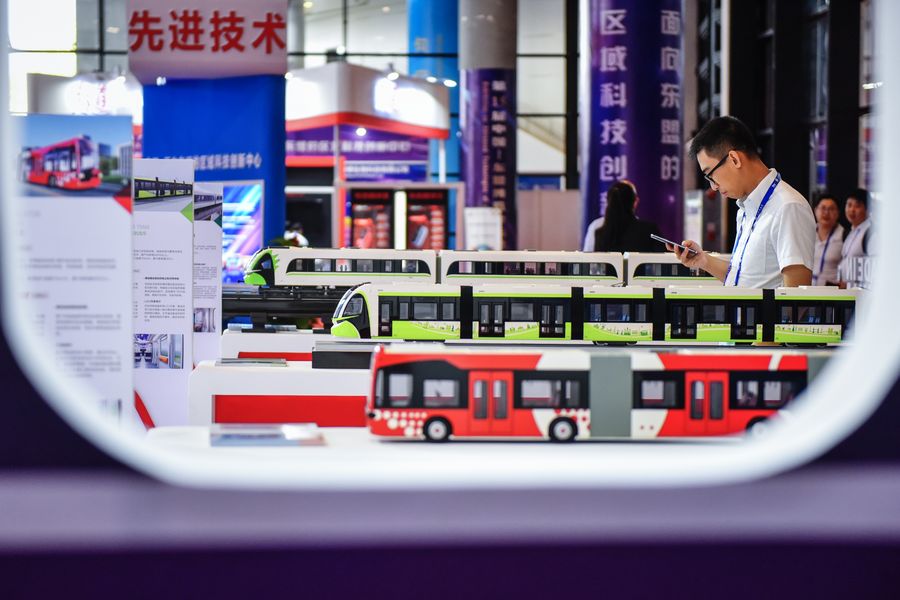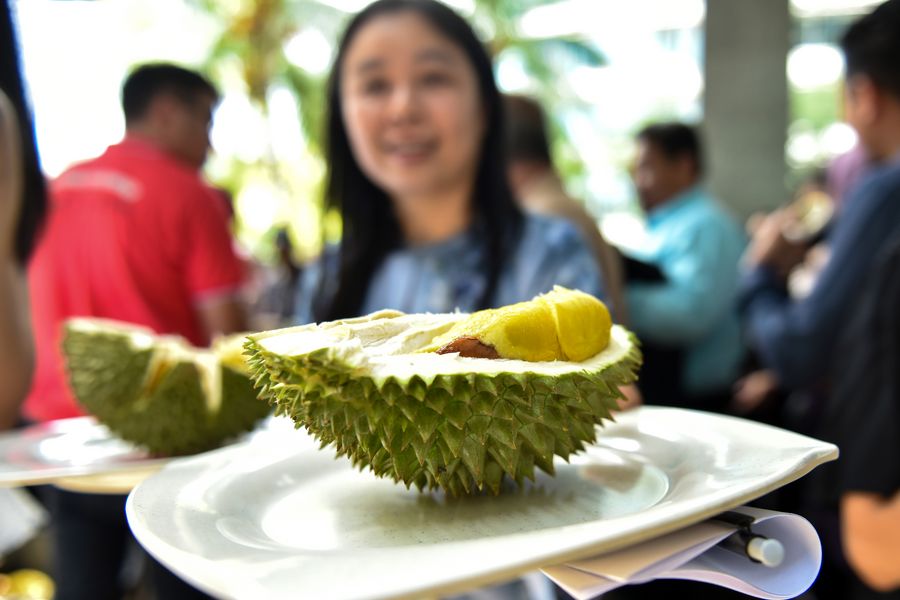
A man passes by a poster of the 35th ASEAN summit and related summits in Bangkok, Thailand, Nov. 1, 2019.(Xinhua/Zhang Keren)
The upgraded protocol will provide new drive for the economic development in China and ASEAN, and also promote the negotiation of the Regional Comprehensive Economic Partnership (RCEP) and the Asia-Pacific Free Trade Area, Chinese Ambassador to ASEAN Huang Xilian said.
by Liang Hui, Zong Pingping
JAKARTA, Nov. 6 (Xinhua) -- The upgraded protocol, which was fully implemented among all its members on Oct. 22, would further bring dividends in the China-ASEAN Free Trade Area (CAFTA), benefiting the enterprises and people in an all-around way, Chinese Ambassador to ASEAN Huang Xilian said.
In an exclusive interview with Xinhua in Indonesia's capital city of Jakarta where Association of Southeast Asian Nations (ASEAN)'s Secretariat is located, Huang said the upgraded protocol will provide new drive for the economic development in China and ASEAN, and also promote the negotiation of the Regional Comprehensive Economic Partnership (RCEP) and the Asia-Pacific Free Trade Area.
The ambassador said CAFTA, covering 11 countries with a population of around 2 billion people, is the first and largest FTA that China has built with overseas economic entities, and also the largest one built with developing countries.
As China's major step to further expand its opening-up soon after joining World Trade Organization (WTO), CAFTA had set a precedent and a basic model to accumulate valuable experience for China to negotiate FTA with more countries. It has made outstanding contributions to form a comprehensive opening-up pattern and improve China's foreign trade level, according to the ambassador.

Trucks from ASEAN countries wait at a border supervision center in Pingxiang City of south China's Guangxi Zhuang Autonomous Region, Jan. 16, 2018. (Xinhua/Zhang Ailin)
He introduced that the upgraded protocol covers areas such as trades in goods and services, investment, economic and technological cooperation, which have enriched and improved the original agreement.
In the field of goods trade, both sides have optimized the rules on the basis of the original agreement, implemented new and more convenient certificates of origin, and increased provisions of customs procedures and trade facilitation.
In the field of trade service and investment, both sides have achieved a higher-level openness to each other in construction, finance, tourism, communications and transportation. Both sides allow each other to set up a sole proprietorship or joint venture, and relax the ratio of shares to companies.
In the economic and technological field, the two sides agree to cooperate and provide financial support to projects in more than 10 aspects such as agriculture, digital economy, transportation, small and medium enterprises (SMEs) and environment. The upgraded protocol also included new areas such as cross-border e-commerce cooperation, the ambassador added.

Photo taken on Sept. 13, 2018 shows models of new-type buses at the 15th China-ASEAN Expo in Nanning, south China's Guangxi Zhuang Autonomous Region. (Xinhua/Li Mangmang)
Huang said the CAFTA has become a model for mutual benefit, win-win cooperation among developing countries.
When CAFTA was launched in 2002, the bilateral trade volume was only 54.8 billion U.S. dollars. By 2018, it had reached 587.8 billion U.S. dollars, an increase of nearly 11 times in 16 years. Meanwhile, two-way investment increased from 3.37 billion U.S. dollars in 2003 to 15.8 billion U.S. dollars in 2018, increasing nearly 5 times.
Up till this year, China has maintained as the largest trading partner for ASEAN for 10 consecutive years. ASEAN has surpassed the United States to become China's second largest trading partner this year, with its cumulative two-way investment reaching 223.3 billion U.S. dollars, Huang added.
He said that the implementation of CAFTA has brought "visible and tangible" benefits and conveniences to enterprises and people in the region which enterprises can fully enjoy the preferential policies more conveniently with greater profits. People from both sides also enjoy each other's high quality products at low prices.

Durians are served at the flag-off ceremony of the first batch of Malaysian whole frozen durian to China, in Putrajaya, Malaysia, June 17, 2019. (Xinhua/Chong Voon Chung)
Taking agricultural products as an example, Huang said the policy brings tropical fruits such as mangosteen, durian and mango into Chinese people's daily life, and Chinese fruits such as apples and pears to the supermarket shelves in ASEAN countries. These "visible and tangible" benefits play an important role in achieving high-quality development and satisfying people's yearning for a better life.
With the continuous deepening of CAFTA, China-ASEAN economic and trade cooperation has become closer and stronger.
Looking to the future, Huang said that the in-depth construction of CAFTA will further promote exchanges and communication, deepen all-round interconnection and jointly defend multilateralism and free trade system. It will positively contribute to the implementation of China-ASEAN Strategic Partnership Vision 2030, and build a solid foundation for the China-ASEAN Economic Community and a closer China-ASEAN Community of Shared Destiny.■



